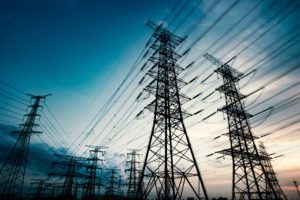Climate change is the defining issue of our time and to tackle it, energy sector must be at the heart of the solution. India’s announcement of a net-zero emissions target by 2070 is a pivotal moment in global efforts to tackle climate change. India’s challenge is not just to decarbonize, but to pioneer a whole new model for low-carbon technologies. If done successfully, this can be a beacon for an entire group of energy-hungry, growing economies around the world. As stated in the International Energy Agency’s (IEA) India Energy Outlook 2021, ‘all roads to successful global clean energy transitions go via India’.
The energy issue that we face today is that more than 80% of the world’s carbon emissions are linked to the production and consumption of energy and our current fossil-based end to end energy system losses are as high as 60%. So, we need to save 3-5 times more on the carbon emissions between now and 2030, to be on course to limit global warming to 1.5 degrees. The only way to tackle today’s energy crisis is a massive scaling up of energy efficiency coupled with the adoption of a New Energy Landscape.
India’s net-zero announcement has been accompanied by a series of near-term goals to be met by 2030. Some of these goals are to reach 500 GW of non-fossil electricity capacity, to have renewables make up 50% of its energy mix, and to reduce projected carbon emissions by 1 billion tonnes. As things stand, more than 80% of India’s energy needs are met by three fuels: coal, oil, and traditional solid biomass. India’s per capita energy consumption, greenhouse gas emissions, vehicle ownership and other key indicators are well below the global average. At the same time, few issues like financially ailing electricity distribution companies and poor air quality in major cities remain to be addressed.

Energy consumption trajectory
India will add the equivalent of a city, the size of Bangalore, to its urban population each year. Most of the buildings and factories that will exist in 2040 are yet to be built. This presents a unique opportunity for us to develop low-carbon, efficient infrastructure, such as net-zero-ready buildings, electrified public transport, smart factories and advance carbon capture and storage technologies. India’s annual clean energy investments will have to increase five-fold to well over $150 billion by the end of this decade. These investments will largely go into creation of new renewable energy capacity, into smart grids, into cleaner transport, and into new low-carbon fuels such as hydrogen. India showed its leadership in solar power by creating the International Solar Alliance (ISA) and last year, the US also joined the ISA at the COP26 in Glasgow.
Electrification in transportation
By the end of this decade, nearly half of India’s sales of two-wheelers and cars will have to be electric. On the manufacturing side, India will have to make significant investments in electrification of processes, and into energy efficiency and material efficiency that would help bring down emissions from industries by about 20% in 2030 compared to today’s pathway.
Ripple effect of Net Zero
While a net-zero emissions pathway would bring considerable gains in air quality, and avoidance of fossil fuel imports to the tune of $75 billion a year by 2030, there will also be challenges and tradeoffs. One of the biggest impacts will be on employment in fossil fuel industries. A mechanism needs to be put into place to ensure employment of people who are working in regions which are heavily dependent today on coal. To that objective, the IEA has convened a Global Commission on People-Centered Clean Energy Transitions, which draws on experiences and best practices from around the world to ensure that the benefits and costs involved in the transformation of energy systems are distributed fairly and in a way that protects the most vulnerable in society.
Opportunities
If managed well, India’s clean energy transition will create new clean energy jobs, enhance quality of life, and ensure a cleaner, healthier environment. The next decade is critical to establish the pathway to this net-zero future.



